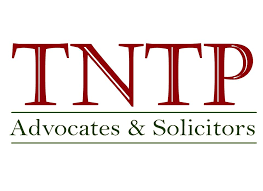The emergence of debts during the operations of businesses in the construction industry is something no business desires. However, not many businesses know how to limit debts during their operations. Therefore, in this article, TNTP’s lawyers will provide insights on how to limit debt in the construction industry.
1. Controlling the Financial Resources of the Business
Controlling the financial resources of a business involves managing and monitoring costs and profits during its operations. This is a crucial task that businesses must constantly carry out to ensure uninterrupted operations. Ineffective financial resource control can lead to a shortage of funds for development, reduce a business’s competitiveness, and potentially result in the business being unable to continue its operations.
Effective financial resource control has a significant impact on debt reduction. When a business can grasp the details of its expenses and debts, it can make informed decisions to address outstanding debts as they come due. It also enables the business to categorize its debts for convenient debt recovery in the future. In contrast, a business lacking the ability to control its financial resources implies that it cannot effectively manage or prevent potential debts that may arise with its partners. Therefore, controlling financial resources is a crucial task for businesses to minimize the possibility of incurring future debts.
2. Identifying and Categorizing Debts
To determine which partners may become potential debtors, businesses also need to identify and categorize their debts. Some small debts can be monitored in preparation for potential recovery if necessary, while larger debts should be considered for necessary recovery measures. Business partners should be categorized based on their financial capabilities and their importance to the business to determine whether they may become debtors in the future.
Depending on the value and timing of debt occurrences, the methods of debt recovery may vary. Therefore, identifying and categorizing debts is essential for businesses to limit debts. Failure to identify and categorize debts directly affects the debt recovery process and, more importantly, the company’s cash flow when it cannot recover these debts. Without clear identification and categorization of debts, businesses will have difficulty implementing necessary measures to prioritize the recovery of important and high-value debts with a high likelihood of recovery. In such cases, the debt recovery process becomes significantly more challenging, and there may be cases where the debts cannot be recovered, leading to financial losses that cannot be compensated for by the business.
3. Inability to Effectively Recover Debts
This is the primary reason that leads to businesses accruing debts, as when there is no capability to recover debts effectively, debts tend to accumulate without proper resolution. Typically, businesses focused on their core operations often lack experience in debt recovery. This results in businesses not knowing how to efficiently pursue debt collection from various debtors, as well as balancing financial resources and timing for these activities. Consequently, businesses may fail to recover debts and may even waste financial resources and time on ineffective debt recovery activities.
To address this issue, businesses need to implement training programs or recruit experienced staff in the field of debt recovery. When these employees possess strong expertise and legal knowledge, they can carry out debt recovery activities effectively, in compliance with the law, and minimize risks for the business during the debt recovery process.
The above is an article by TNTP’s lawyer on the topic: ” How to limit debt in the construction industry? ” Hopefully, this article provides value to its readers.
Best Regard.







